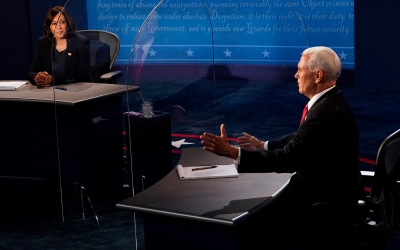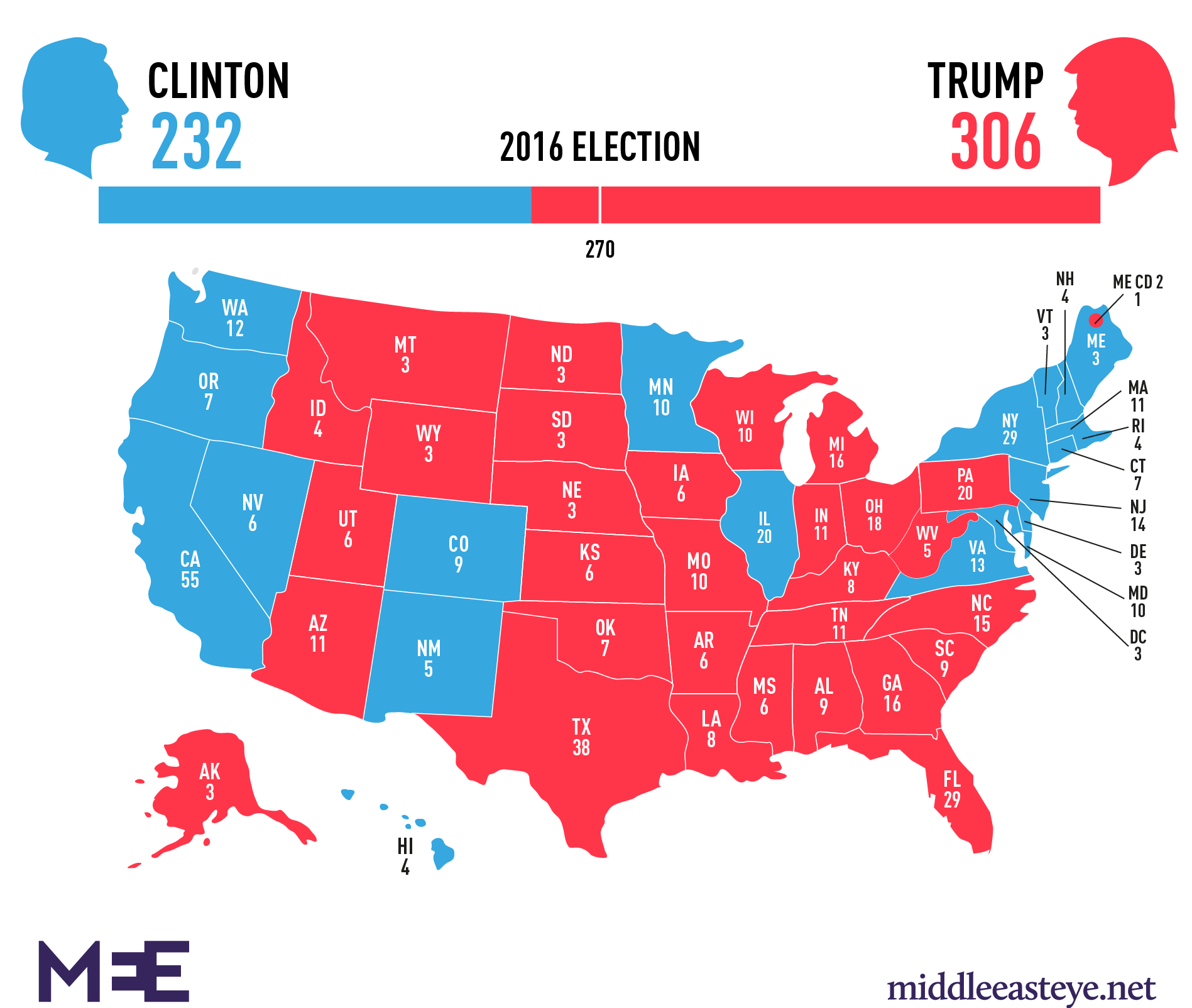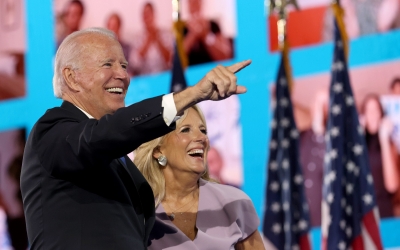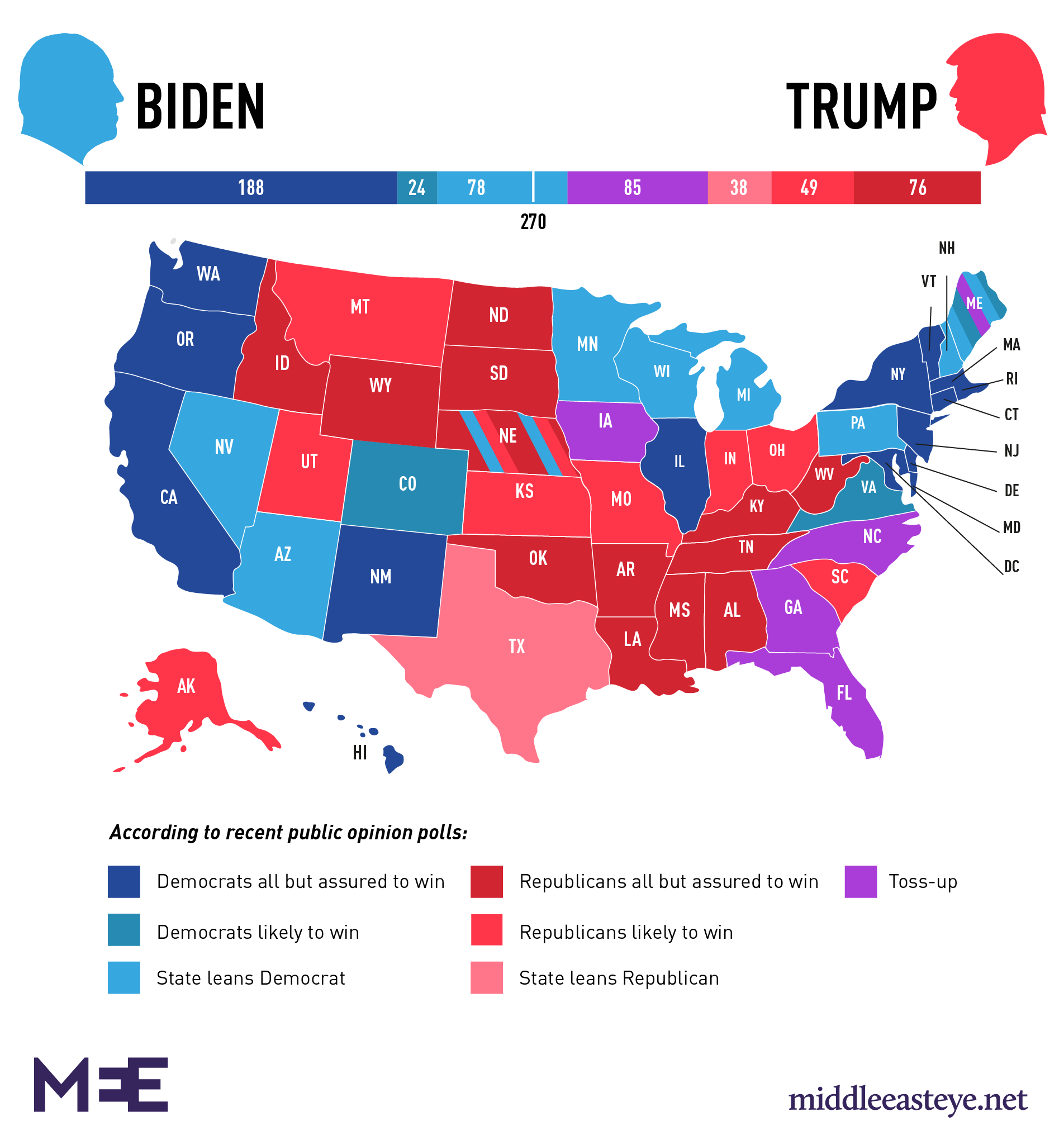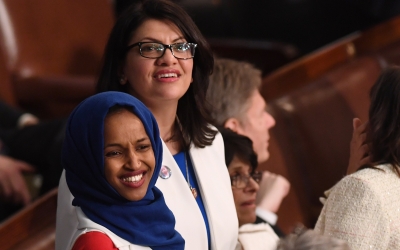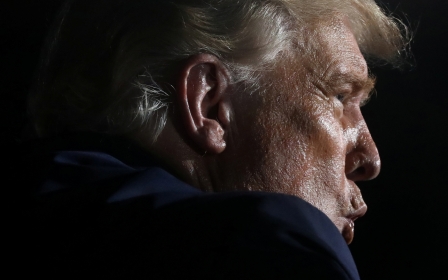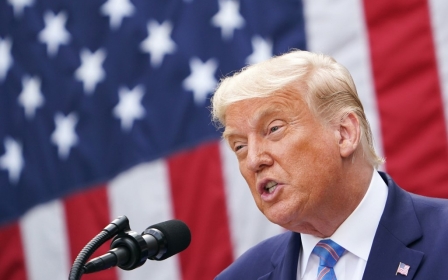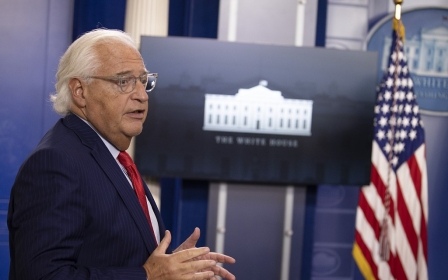US presidential election explained in five questions

When all the votes from the 2016 election were tallied, Hillary Clinton had almost 3 million more than Donald Trump. Still, Trump was declared the winner with a majority of the electoral college votes.
How and why did that happen and what is the electoral college?
The United States has a complex voting system that is designed to ensure the political power of the states. The election is decided by electoral college votes awarded by states, not the overall count from across the country.
The electoral college votes assigned to each state depends partly on the size of its population. It works like a point system: Alaska has three, Virginia has 15 and California - the most populous state - has 55.
States organise their own vote, and with a few exceptions, their electoral college votes are awarded in state-wide, winner-takes-all elections. To win the presidency, a candidate must win a majority of the 538 electoral college votes - at least 270.
New MEE newsletter: Jerusalem Dispatch
Sign up to get the latest insights and analysis on Israel-Palestine, alongside Turkey Unpacked and other MEE newsletters
What are 'swing states?'
To get to that "magic number" of 270, candidates focus their campaigning efforts on states that are up for grabs - swing states. Much of the election terrain is already spoken for, with projected results often landing the moment that polls close down.
All three West Coast states - California, Oregon and Washington - are all but guaranteed to vote for the Democratic candidate, while southern conservative states like Mississippi, Alabama and Tennessee can be safely expected to vote Republican.
On electoral maps, red is used for Republican states and blue for Democratic ones.
That leaves about a dozen or so battleground states with no clear ideological leanings where the campaigns spend time and money to persuade voters. A state is seen as a battleground if polls show that the gap in support between the two major candidates is within 5 percentage points.
In 2016, it was said that Trump's promise to bring back industrial jobs helped him win Midwestern states like Wisconsin, Pennsylvania and Michigan.
Trump's victory margin in all three states adds up to about 78,000 votes, a fraction of Clinton's victory margin of 4.2 million votes in California alone - which explains the discrepancy between the popular vote and the electoral college tally.
While Florida and several states in the Midwest - the central northern region of the country - are often seen as the main decider in modern elections, swing states shift due to demographic and political factors.
Virginia, for example, went from solid red to battleground status to a safe Democratic state over the past 20 years, partly because of a rapid growth in the non-white population that largely favours Democrats.
This cycle, Joe Biden is making a push for Texas, the largest Republican stronghold with 38 electoral college votes. Polls also show that he is competitive in traditionally conservative states like Georgia and Alaska.
US presidential elections are held on the first Tuesday after the first Monday of November on leap years. This cycle, the race will be on 3 November.
How are the electoral votes assigned?
The electoral college votes assigned to each state matches the number of its congressional delegation - that is two senators plus the number of US representatives, which is proportionate to the state's population.
The formula sets a minimum of three electoral college votes per state, which favours states with small populations. Wyoming, the least populated state, is home to around 580,000 people. It gets three electoral votes while California's nearly 40 million people get 55.
Proportionate to the size of their population, a vote in Wyoming has more electoral clout than a vote in California. Wyoming gets one electoral college vote per 193,000 people. In California, the ratio is one electoral college vote per 718,000 people.
Americans living in non-state territories, including Puerto Rico, Guam and American Samoa, do not get a say in the presidential race although they can vote in the primaries. The capital, District of Columbia, is allocated three electoral college votes despite not being a state or having full congressional representation.
How does voting by mail work?
Despite the vast scale and relative complexity of elections, the next president is usually announced before dawn on Wednesday based on projections of the results of individual states.
In 2016, CNN called the race for Trump shortly before 3 am, East Coast time. This year, however, the results are not expected to come in as quickly because of a spike in mail-in ballots amid the coronavirus pandemic.
Mail-in ballots are simply a way to vote via mail without being present at the polls. But Trump has cast doubt about their integrity despite voting by mail himself in Florida earlier this year.
Voting rights advocates have refuted the notion that voting by mail would lead to fraud, citing the safeguards that all states have to ensure the fairness of the election.
In May, Twitter started putting disclaimers under Trump tweets questioning voting by mail. "Experts say mail-in ballots are very rarely linked to voter fraud," the statement says.
Still, many fear that Trump's efforts to cast doubt over the method of voting for a significant part of the population could open the door to legal challenges questioning the legitimacy of the next president.
Many states have relaxed their voting by mail requirements because of the coronavirus crisis.
But the standards still vary. In a few states, including Oregon and Washington, ballots are sent automatically to every registered voter. For years, voting there has happened almost exclusively by mail.
Other states, like Michigan, provide mail-in ballots on request. And a handful of others require an excuse, including proof of being away on election day, to issue mail-in ballots.
Many states also allow early voting in person at municipal centres and other designated areas, sometimes weeks ahead of the election. Media reports have shown dozens of people already lining up to vote early in these states.
Mail and early voting will almost certainly delay the results, especially in states where the race is close and cannot be called until all the votes are counted.
Who are the electors?
While the results often do come out hours after the election, they are not certified until weeks later. And the winning candidate does not officially become "president-elect" until the electoral college votes are tallied.
Electoral college votes are cast by real people, known as electors. The party of the presidential candidate who wins a state chooses its own electors for it. That selection process varies depending on the state.
Electors are expected to vote for the candidate that belongs to the party that selected them. In other words, a Republican elector is expected to cast his or her vote for the Republican presidential candidate.
Technically, Americans in each state vote for the slate of electors of the party of the presidential candidate they choose on the ballot. So if you vote for the Biden-Harris ticket in Massachusetts, in practice, you are voting for the Massachusetts Democratic Party's electors.
Historically, there have been a handful of so-called faithless electors - electoral college voters who cast their vote for someone other than the candidate who won their states.
Faithless electors have never swung an election. They almost disappeared and had become an afterthought since the turn of the past century - until 2016.
After Trump's victory, two Democratic electors openly called for an electoral college rebellion where the designated voters from both parties would turn faithless to elect a "moderate Republican", not Trump.
They called themselves the "Hamilton Electors" after Alexander Hamilton, the first US treasury secretary who argued that the electoral college is designed to ensure that the presidency would not fall to someone without "the requisite qualifications".
Needless to say, their push failed.
But the election set a modern record of seven faithless electors - five Democrats and two Republicans. Maine, Colorado and Minnesota each rejected one faithless elector in 2016 as well, insisting that the electoral college must reflect the result of the elections.
Dozens of states have laws that ban electors from defying the election results. But how they go about it is not the same. For example, the state of Washington imposed a $1,000 fine on the electors who did not vote for Hillary Clinton - who had won the northwestern state in 2016.
Colorado flat out rejected the vote of the elector who wanted to vote for Republican John Kasich instead of Clinton as part of the push for the so-called Hamilton Electors. Earlier this year, the US Supreme Court upheld Colorado's law that requires electoral college voters to follow the results of the presidential election in the state.
The bottom line is that the legal and philosophical questions around faithless electors may be intriguing, but they are extremely unlikely to affect the result of the election.
Middle East Eye delivers independent and unrivalled coverage and analysis of the Middle East, North Africa and beyond. To learn more about republishing this content and the associated fees, please fill out this form. More about MEE can be found here.


